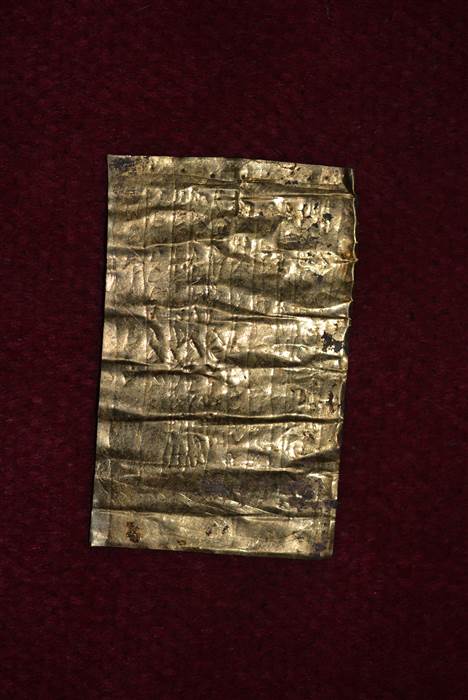“We found that Christians and pagans were buried together and we can conclude that, at the time, they lived in harmony and tolerance.” – Miomir Korac, chief archaeologist at the Viminacium site

PHOTO: NBC News
BELGRADE, SERBIA – Archaeologists were digging at the Viminacium archaeological site in Serbia when they saw a glint of gold.
It turned out to be what researchers are calling “curse tablets”. They’re made of gold and silver, and were discovered in Roman tombs at the site. Several tablets begin with the Latin inscription: “let all the forces and demons help that…”
Viminacium was the former capital of the Roman province of Moesia Superior, a province that stretched across much of what is now Serbia. The city, at its height, was home to over 40,000 people in the 4th century AD. The tablets date to this period. The city was over a third larger than the famous Roman city of Pompeii, and sported a diverse mix of several different ethnicities, including Romans, Greeks, Russians, and Jews.
In Roman culture, Romans used these tablets to curse anyone they wanted, be it a noisy neighbor, a nosy mother-in-law, or anyone else who they considered worth cursing.
Some of the tablets are written in Greek, but some also are filled with an unidentified, untranslatable language with a set of unknown symbols. The experts and translators working on them think that these were probably completely made up by whoever owned the tablets, as to keep the message a secret to everyone except those who belonged to the spiritual realm, like gods and demons.
A Tale of Two Religions
The tablets tell an interesting story about the people living in Viminacium, one that the archaeologists are happy to share. The people living in that part of Serbia were known for being very superstitious. They would have put a lot of stock in these tablets and their power.
“This is a very important archaeological discovery because it shows us how luxurious the life in Viminacium was or how much hope they had in the ‘curse tablets’ so that they used precious metals,” Miomir Korac said, “According to my knowledge, such tablets have never been found inscribed in gold anywhere. According to the Roman customs, gold was never put into graves.”
Not only were the tablets very valuable, but the people who made them invoked several deities, as if they wanted to make sure that someone would hear and carry out the curse! It’s a very strange find, as the tablets invoke both Christ and several pagan gods. It’s a telling mix of both Christianity and pagan and Roman religions. The conversion process must have happened slowly.
One might think that the emergence of Christianity in Serbia would spark a conflict, but according to the archaeology at Viminacium, that just wasn’t the case. Christians and pagans were buried together. Figures from both religions were often invoked in religious rites. The people who lived there believed in the power of both pantheons to answer their prayers and carry out their curses.
Such religious tolerance was actually quite common throughout the Roman Empire. As long as the Emperor was worshiped, and you weren’t hurting anyone, you could worship whatever and whomever you wanted, within reason. Because of this, Christians and non-Christians lived in relative harmony.
Viminacium was the headquarters for Trajan’s army during the Dacian Wars in the First Century AD. It was here, too, that Emperor Septimus Severus declared his son, Caracalla, Caesar. The site is home to several historical places of note, including a mausoleum.
Archaeologists will continue their excavations at Viminacium and the tablets are under the care of Serbia’s archaeological community. They will be carefully cataloged and translated. Perhaps further translation will reveal even more about what the people in this important Roman city were like.

